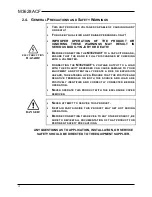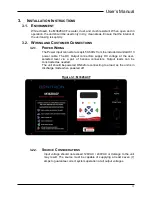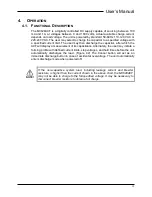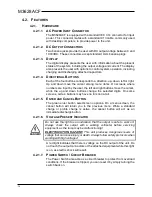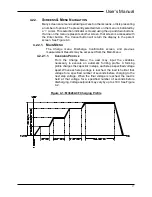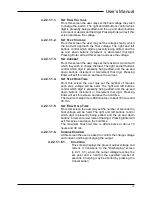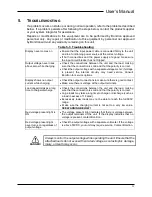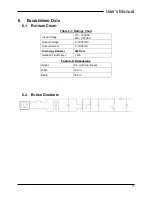
User’s Manual
25
7.
A
PPENDIX
7.1.
A
PPLICATION
N
OTES
7.1.1.
T
YPICAL
C
APACITOR
B
ANK
F
ORMING
/
T
ESTING
P
ROCEDURE
Electrolytic capacitors undergo physical changes when stored for long
periods. Depending on the ambient conditions of the storage, this can be from
six months to two years. If the capacitors are rapidly taken to their rated
voltage, excessive leakage current may cause them to overheat and fail.
Electrolytic capacitors also undergo physical and chemical changes after long
periods of use. If wear continues, these capacitors can fail, potentially causing
catastrophic damage. Capacitor lifetime is heavily dependent on use and
ambient conditions, and thus impossible to predict. Periodically measuring
the capacitance of a bank can help quantify the wear on and remaining
lifetime of the capacitors, helping avoid catastrophic failure without
periodically replacing the entire bank.
If the capacitor bank is part of a Variable Frequency Drive, check with the
drive manufacturer for specific instructions on how to reform the capacitor
bank.
A short description is below.
1.
Ensure the capacitor bank is fully discharged.
2.
Apply power to the M3628ACF.
3.
Attach the output leads to the capacitor bank directly. If you are forming
the capacitors in a drive, ensure that you are directly across the DC bus,
not attached through the braking circuit.
4.
Select "Charging Profile" from the main menu.
5.
Set the final voltage to the rated voltage of the capacitor bank.
6.
Set the step voltage to approximately 10% of the rated voltage of the
capacitor.
7.
Set the charging current to its maximum setting, unless counter-
indicated by the capacitor manufacturer.
8.
Set the step hold time to at least 600 seconds.
9.
Set the final hold time to at least 900 seconds, or consult the equipment
manufacturer for a suitable reforming time.
10.
Begin charging the capacitor, listening for abnormal sounds or other
indications in the capacitors or attached equipment. Monitor the current
indicator to make sure there is not excessive leakage current, and the
voltage indicator to see that the voltage is rising. Continually monitor the
capacitor banks or attached equipment for abnormal signs, such as
noise, heating, or smell. Internal bleeder resistors on the capacitor bank
may require current during the process. Consult the equipment
manufacturer for more information.
IF AT ANY TIME ABNORMAL SIGNS ARE DETECTED, OR THE LOAD
CAPACITORS ARE OVERVOLTAGED, PRESS AND HOLD THE
IMMEDIATE DISCHARGE BUTTON TO END THE PROCEDURE.
11.
After the final hold time, the unit will discharge the load and calculate its
capacitance. Wait until discharging is complete before dis-connecting
the load. Record the calculated capacitance somewhere safe, along with
Summary of Contents for M3628ACF
Page 4: ...M3628ACF 4 This page intentionally left blank ...
Page 6: ...M3628ACF 6 This page intentionally left blank ...
Page 14: ...M3628ACF 14 This page intentionally left blank ...
Page 22: ...M3628ACF 22 This page intentionally left blank ...
Page 24: ...M3628ACF 24 This page intentionally left blank ...
Page 27: ......


